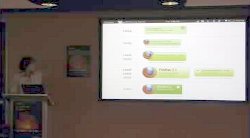Reporting today on location in sunny Mountain View, California and the lovely Mozilla headquarters.
I’m doing a talk in the Mozilla lounge about the history of the mozilla websites called A Brief History Mozilla.com (and .org) today (April 12, 2011) at 12:30PM Pacific time (4:30pm Atlantic time for those back home on Prince Edward Island). The talk will be streamed live from the Air Mozilla website. Come watch.
The slides for the presentation are available in a few different formats. The video will also be archived – I’ll update this post with links when the video is available.
Update: Video of the talk is now available download or watch directly (if you have Firefox 4+ or Chrome): A Brief History Mozilla.com (and .org) – 14Mb Ogg Theora file (35 min). The lighting in the video favours the slides, so you can’t really see me. Just picture someone handsome and dynamic in the dark to the left of the slides.
You can also download the slides in OpenOffice.org Impress format, PowerPoint format, or as a PDF.




